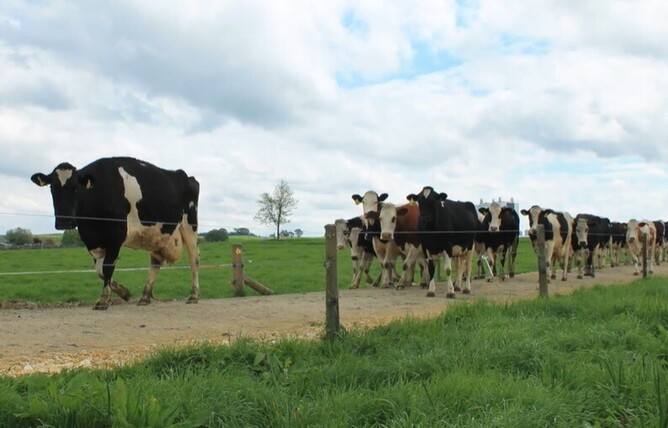Farmers like our StockRock zeolite race surface because it reduces dairy cow lameness in their herd. Instead of stepping on sharp edges or carrying hard stones onto the concrete of the milking shed, StockRock crushes down under hooves and provides a softer surface to walk on.
Aside from having the very best possible walking surface for cows, another key factor in reducing dairy cow lameness is effective herd management. By following these four simple tips you can further reduce the chances of injuring your cows:
1 Let cows walk to and from the shed at their own pace. When cows are not rushed they walk with their heads down, which means they can navigate better and avoid any potential hazards on the race and into the shed. When un-rushed, cows will naturally place their hind hoof in the same place as the front one, meaning the front hooves find the safest places to step and then the hind hooves follow them.
2 Don't let cows bunch up. This can sometimes be due to an impatient worker trying to get them in or out quicker, or it can be due to poor race design and maintenance if cows have to slow down to navigate an unfamiliar or uneven section of a track. Monitor the entire herd for the entire time. If you see congestion then hold the cows behind and let the traffic jam ease up so they can calm down and navigate themselves better.
3 Don't push cows through the yard and milking shed. Yelling at cows or forcing them with backing gates causes distress and can have cows standing on each other. Cows naturally keep their heads down, so if you see heads sticking up in the milking shed you know you may have pushed them in too quickly and too close together.
4 Reduce extended periods of having the cows walking and standing, as they do get sore hooves. Plan and assess the distance they need to walk to the shed and back, and the amount of time spent processing through the milking parlour. Cow vets typically advise that a dairy cow should not be 'on her feet' for long periods of time. Cows need to be lying down for 12-14 hours a day, and standing on concrete and hard surfaces for extended periods will cause more distress than grass.
Effective processes coupled with educating and training all farm workers, mean improved animal management which reduces the risk of health issues such as lameness.
